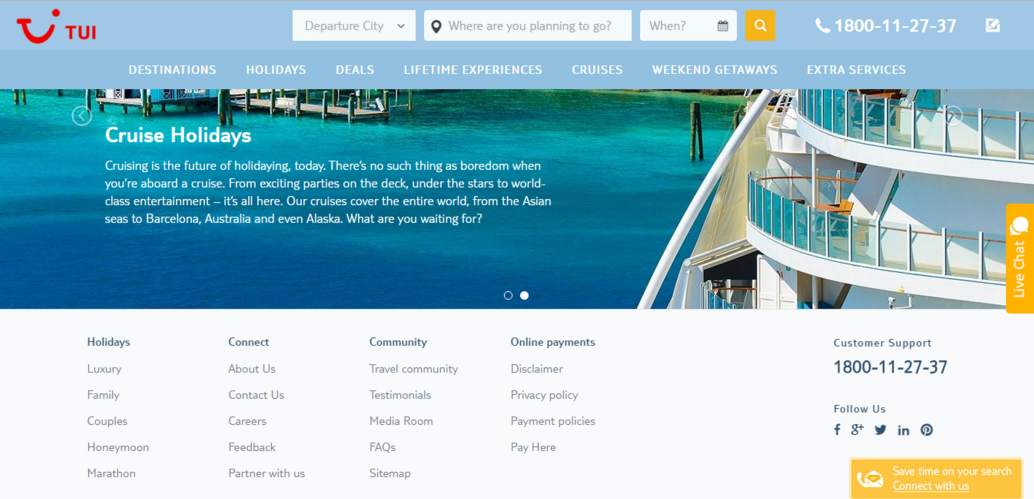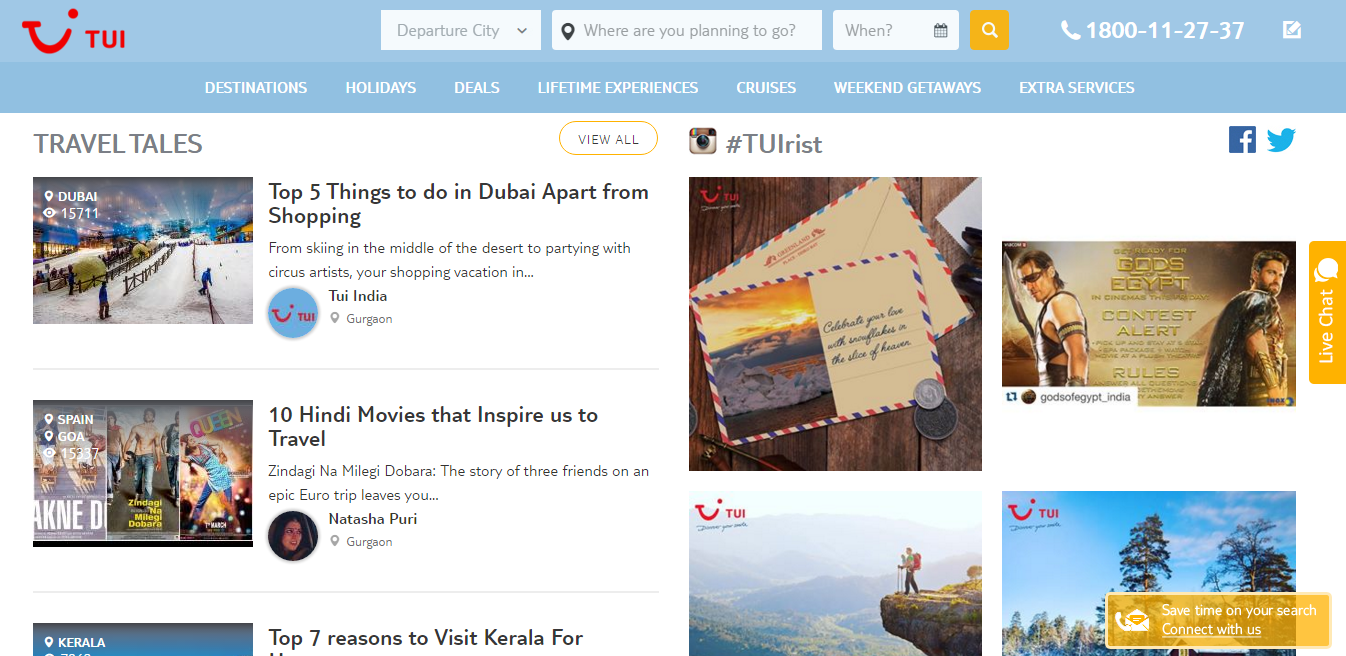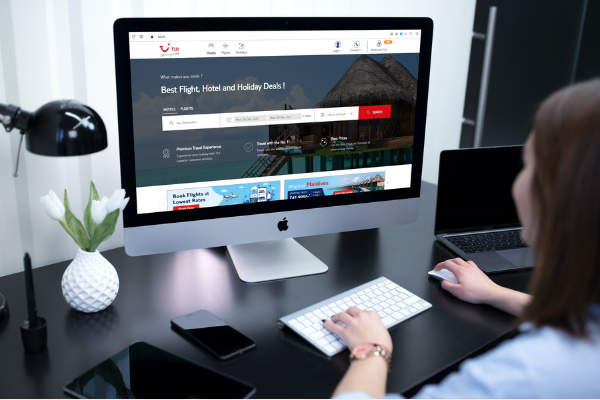TUI India is part of the TUI Group, one of the first travel companies in the world. Its goal was to revamp the TUI India website and optimize its performance for a better user experience, and additional functionalities.
The TUI India website had multiple platforms for selling travel packages. But its main challenge was to boost enquiries and sales of packages online, and bring the performance level of tui.in at par with tui.com.
To address these challenges, the Srijan team proposed to build a new, easy-to-use website developed in Drupal 7, integrated with Salesforce CRM, PayU, Zomato, and other APIs. Here's how they achieved it:
Drupal 7 Website with Custom Travel Packages
The new architecture for tui.in was discussed with the project owner and rest of the stakeholders. The previous version of the architecture included itinerary packages and a few destinations as static pages on the website. The TUI India team was sure that replicating the current features in the new website would suffice. However since the website design was based on the old architecture and the new design demanded changes at the architecture level. After a couple of discussions, it was decided that the architecture development should be split into multiple sprints.
Site Features: The development team started with the main features of the site. The main functionalities added were custom travel packages, payment gateway and the custom “Buy Package” option. Another functionality that was not available previously was that of “Featured Packages”, where some packages were highlighted as per the need.
Image Carousel: The images supporting the text also had to be improved heavily in terms of quality and design. To incorporate HD images on the website, the Srijan team created an image carousel which enabled the TUI team to feature the images according to priority.
Integration with Salesforce CRM: Previously, offline packages were listed on the old website, and were sold in various Indian cities. Since the website was not very user-friendly, the sales did not see much traction. With the new, easy-to-use website, TUI India team now also needed a way to capture the enquiries, and be able to take action on them. So Srijan’s team integrated Salesforce with the Drupal 7 website.
 Website users often spend a lot of time searching for the right information. In the new website, they get a “Connect with us” option. They can easily ask for information such as Destination Guides with no packages, or the next version of an expired package. They can now leave their query, and someone from the TUI team would reach out to them.
Website users often spend a lot of time searching for the right information. In the new website, they get a “Connect with us” option. They can easily ask for information such as Destination Guides with no packages, or the next version of an expired package. They can now leave their query, and someone from the TUI team would reach out to them.
New Payment Gateway and Integration with PayU: The Srijan team also smoothened out the implementation of online payment on the website. The new payment gateway was integrated using PayU. It had some unforeseen challenges, but Srijan was able to develop the entire feature in just 15 days, earlier than what was estimated.
Zomato Integration: Every excited traveller at a new destination wants to know about the best things to do and the new attractions to visit. But one of the first requirements is to find suitable places to eat. For this, the restaurants are fetched from Zomato. The TUI team just needs to save the longitude and latitude of every location. The ratings and reviews are pulled into the website using the Zomato API.
Visa Guidelines: To keep travelers informed about the complex visa requirements during international travel, Srijan integrated the IVA API that enabled the team to attach country-specific visa guidelines, after creating a destination guide.
Instagram Pictures: Images on TUI India’s Instagram profile were fetched using Instagram API, adding to the visual appeal of the new website.

Website Hosting
The hosting of TUI's website is managed by Srijan's partner Scale Monks Technologies. This was carried out in three phases. Srijan did the development on its own server managed by Scale Monks. This was done to ensure that there are no deployment glitches in handling different server configurations. Then coding and database was migrated to the staging phase, which was hosted at Amazon EC2. The client was keen on EC2 because of security and flexibility. Once TUI gave the go ahead after their testing with staging, the production was made live on EC2.
Curious about the complete solution and value delivered to the client?
Looking to transform in-store digital experiences at your enterprise? Let’s do a little brainstorming to see how Srijan can help.
Our Services
Customer Experience Management
- Content Management
- Marketing Automation
- Mobile Application Development
- Drupal Support and Maintanence
Enterprise Modernization, Platforms & Cloud
- Modernization Strategy
- API Management & Developer Portals
- Hybrid Cloud & Cloud Native Platforms
- Site Reliability Engineering




